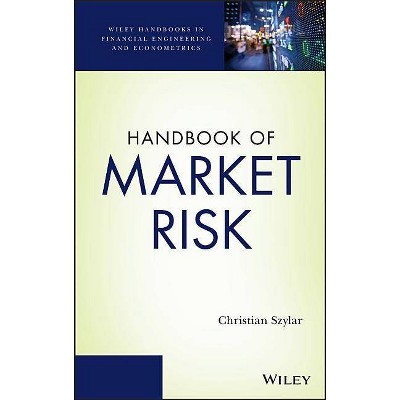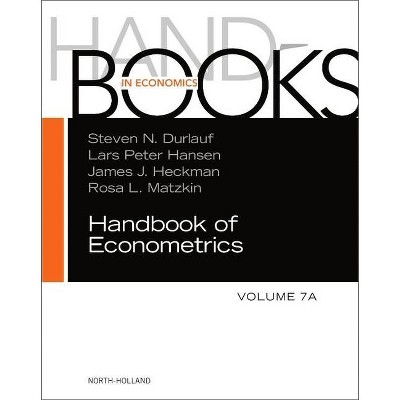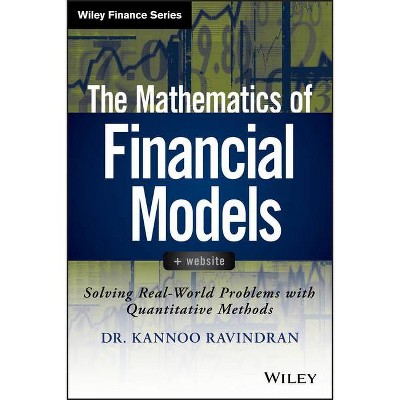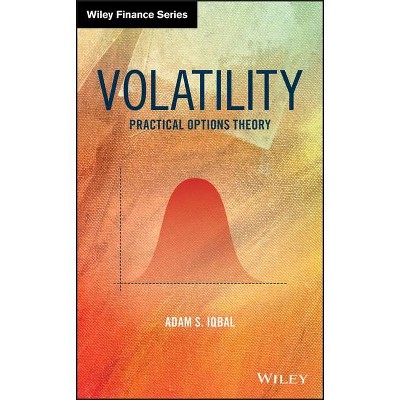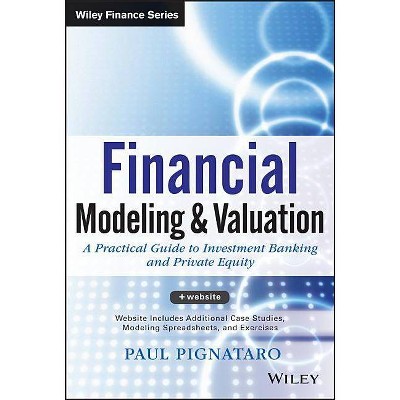Handbook of Volatility Models and Their Applications - (Wiley Handbooks in Financial Engineering and Econometrics) (Hardcover)
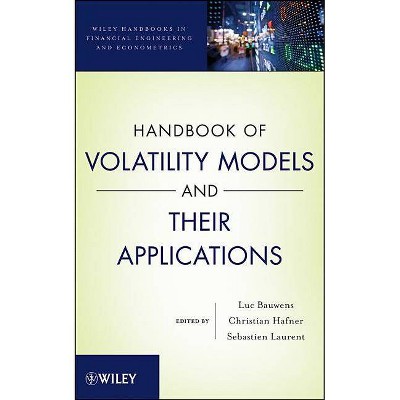
Similar Products
Products of same category from the store
AllProduct info
<p/><br></br><p><b> About the Book </b></p></br></br>"The main purpose of this handbook is to illustrate the mathematically fundamental implementation of various volatility models in the banking and financial industries, both at home and abroad, through use of real-world, time-sensitive applications. Conceived and written by over two-dozen experts in the field, the focus is to cohesively demonstrate how "volatile" certain statistical decision-making techniques can be when solving a range of financial problems. By using examples derived from consulting projects, current research and course instruction, each chapter in the book offers a systematic understanding of the recent advances in volatility modeling related to real-world situations. Every effort is made to present a balanced treatment between theory and practice, as well as to showcase how accuracy and efficiency in implementing various methods can be used as indispensable tools in assessing volatility rates. Unique to the book is in-depth coverage of GARCH-family models, contagion, and model comparisons between different volatility models. To by-pass tedious computation, software illustrations are presented in an assortment of packages, ranging from R, C++, EXCEL-VBA, Minitab, to JMP/SAS"--<p/><br></br><p><b> Book Synopsis </b></p></br></br><b>A complete guide to the theory and practice of volatility models in financial engineering</b> <br /> <br /> <p>Volatility has become a hot topic in this era of instant communications, spawning a great deal of research in empirical finance and time series econometrics. Providing an overview of the most recent advances, <i>Handbook of Volatility Models and Their Applications</i> explores key concepts and topics essential for modeling the volatility of financial time series, both univariate and multivariate, parametric and non-parametric, high-frequency and low-frequency.</p> <p>Featuring contributions from international experts in the field, the book features numerous examples and applications from real-world projects and cutting-edge research, showing step by step how to use various methods accurately and efficiently when assessing volatility rates. Following a comprehensive introduction to the topic, readers are provided with three distinct sections that unify the statistical and practical aspects of volatility: </p> <ul> <li> <p>Autoregressive Conditional Heteroskedasticity and Stochastic Volatility presents ARCH and stochastic volatility models, with a focus on recent research topics including mean, volatility, and skewness spillovers in equity markets</p> </li> <li> <p>Other Models and Methods presents alternative approaches, such as multiplicative error models, nonparametric and semi-parametric models, and copula-based models of (co)volatilities</p> </li> <li> <p>Realized Volatility explores issues of the measurement of volatility by realized variances and covariances, guiding readers on how to successfully model and forecast these measures</p> </li> </ul> <p><i>Handbook of Volatility Models and Their Applications</i> is an essential reference for academics and practitioners in finance, business, and econometrics who work with volatility models in their everyday work. The book also serves as a supplement for courses on risk management and volatility at the upper-undergraduate and graduate levels.</p><p/><br></br><p><b> From the Back Cover </b></p></br></br>A complete guide to the theory and practice of volatility models in financial engineering<br /> <br /> <p>Volatility has become a hot topic in this era of instant communications, spawning a great deal of research in empirical finance and time series econometrics. Providing an overview of the most recent advances, Handbook of Volatility Models and Their Applications explores key concepts and topics essential for modeling the volatility of financial time series, both univariate and multivariate, parametric and non-parametric, high-frequency and low-frequency.</p> <p>Featuring contributions from international experts in the field, the book features numerous examples and applications from real-world projects and cutting-edge research, showing step by step how to use various methods accurately and efficiently when assessing volatility rates. Following a comprehensive introduction to the topic, readers are provided with three distinct sections that unify the statistical and practical aspects of volatility: </p> <ul> <li> <p>Autoregressive Conditional Heteroskedasticity and Stochastic Volatility presents ARCH and stochastic volatility models, with a focus on recent research topics including mean, volatility, and skewness spillovers in equity markets</p> </li> <li> <p>Other Models and Methods presents alternative approaches, such as multiplicative error models, nonparametric and semi-parametric models, and copula-based models of (co)volatilities</p> </li> <li> <p>Realized Volatility explores issues of the measurement of volatility by realized variances and covariances, guiding readers on how to successfully model and forecast these measures</p> </li> </ul> <p>Handbook of Volatility Models and Their Applications is an essential reference for academics and practitioners in finance, business, and econometrics who work with volatility models in their everyday work. The book also serves as a supplement for courses on risk management and volatility at the upper-undergraduate and graduate levels.</p><p/><br></br><p><b> Review Quotes </b></p></br></br><br>Conceived and written by over two-dozen experts in the field, the book cohesively demonstrates how volatile certain statistical decision-making techniques can be when solving a range of financial problems. (Zentralblatt MATH 2016) Conceived and written by over two-dozen experts in the eld, the book cohesively demonstrates how \volatile certain statistical decision-making techniques can be when solv- ing a range of nancial problems.<br><p/><br></br><p><b> About the Author </b></p></br></br><p>Luc Bauwens, PhD, is Professor of Economics at the Université catholique de Louvain (Belgium), where he is also President of the Center for Operations Research and Econometrics (CORE). He has written more than 100 published papers on the topics of econometrics, statistics, and microeconomics.</p> <p>Christian Hafner, PhD, is Professor and President of the Louvain School of Statistics, Biostatistics, and Actuarial Science (LSBA) at the Université catholique de Louvain (Belgium). He has published extensively in the areas of time series econometrics, applied nonparametric statistics, and empirical finance.</p> <p>Sebastien Laurent, PhD, is Associate Professor of Econometrics in the Department of Quantitative Economics at Maastricht University (The Netherlands). Dr. Laurent's current areas of research interest include financial econometrics and computational econometrics.</p>
Price History
Price Archive shows prices from various stores, lets you see history and find the cheapest. There is no actual sale on the website. For all support, inquiry and suggestion messages communication@pricearchive.us
